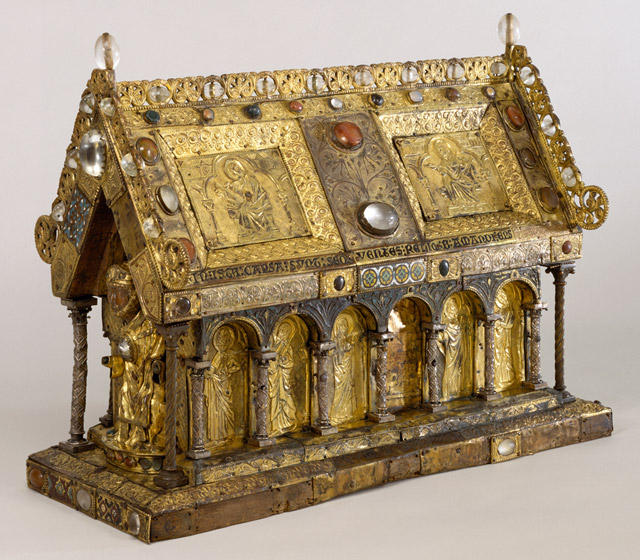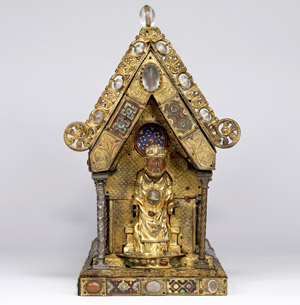The Shrine of St. Amandus
The Walters Art Museum, Baltimore

 Select the image to zoom
Select the image to zoom
Amandus was the bishop of Maastricht and the founder and abbot of the Monastery of Elnon, near Tournai, where he was buried after his death (ca. 679). Before the end of the seventh century, he was considered a saint, and a pilgrimage cult developed at Elnon, eventually requiring that his bones be housed in a reliquary that could be shown to the faithful. In addition to being visited by pilgrims and carried in procession on feast days, the relics of St. Amandus were taken on a tour of the region around Elnon at least twice: once in 1066 to raise funds to rebuild the monastery after it was destroyed by fire, and again in 1107 to remind ambitious nobles of the monastery's power and privileges. At least one earlier reliquary for St. Amandus must have existed, but it was destroyed or lost prior to the thirteenth century, perhaps in the fire of 1066. The figure at one of the gable-shaped ends is presumably Amandus; the other end, now empty, probably originally contained a figure of Christ. Although many such reliquaries were destroyed or sold to collectors during periods of religious reformation and political revolution, some continued to be used into the modern period: a reliquary similar to that of St. Amandus is still owned by the religious brotherhood of St. Symphorian in Belgium, and carried in public procession on several occasions during the year. Over the centuries, reliquaries such as this were likely to suffer some wear. Extensive scientific testing has shown that this reliquary was made in the early thirteenth century, but that it has been repaired and modified throughout the centuries as it continued to be used in the service of the cult of St. Amandus. The most recent modifications, however, were made by a late nineteenth- or early twentieth-century art dealer hoping to "improve" the piece and make it more marketable.






